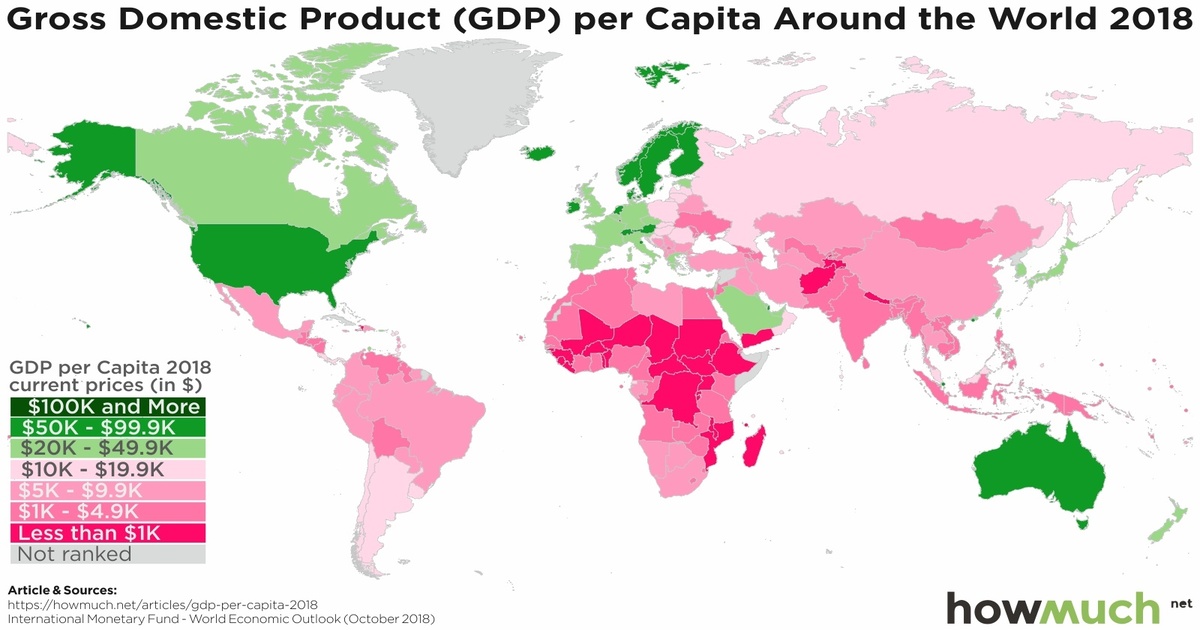
Blogs
A few ideas about economic growth
May 27, 2019


The problem of maintaining economic growth has several cross-sections.
The first most common and discussed is the global growth trend. After a decade of ultra-fast global GDP growth in the mid-60s to mid-70s, global GDP growth began to decline, returning to the long-term trend of fluctuations in the range of 1-3%. This is not an anomaly, this is a normal organic trend. The period of ultra-fast growth was explained by a sharp jump in productivity after the Second World War due to the adaptation of technologies used in the war, a sharp demographic growth in the delayed birth rate in Europe, high levels of investments in the economy aimed at eliminating the consequences of the Second World War, and so on. But this unique combination of factors could not last forever. Now the structures of demographic processes in the developed world limits their growth potential, at the same time, China is entering the trajectory of growth inherent in middle-income countries. India, the densely populated countries of Hindustan and Africa still have a low base of public wealth, and even their relatively rapid growth has little impact on global growth.
The second cross-section relates to the regionalization of growth. Different regions of the world will grow at different rates, and most likely the growth will be different. Previously, the main beneficiary of global growth was the developed world, due to the higher complexity of the economy and technological development. This is well described in works based on the "Center-Periphery" model. The conditional Atlantic West, as the main core of generationof knowledge, innovation and investments, received a larger share of the created added value than the countries of the less industrially complex semi-periphery and raw material periphery. At the moment, we see the formation of a new Center in Southeast Asia, the tone of which is set by China. Given China's intention, supported by ideology and resources, to become a place of generating new knowledge, innovation and technology, it is highly likely that China will become the main donor donor of innovation, technology and investment in this part of the world. Thus, we are moving towards the transformation of the unipolar Western-centric world to the formation of two centers, each of which will have its own semi-periphery and periphery.
The third cross-section is a consequence of the first two. Increased competition for the appropriation of the main benefits of global economic growth will lead to rivalries between blocks and centres, which on the one hand will create barriers to the effectiveness of the global economic system in a variety of ways, from trade wars to direct military conflicts. Therefore, it is necessary to reformat the existing institutions of international cooperation, collaboration and cooperation of countries to reduce these risks.
The fourth cross-section is related to the problem of inequality. Two trends will be encountered: an objective improvement in the welfare of the population in the developing world through the elimination of poverty, and an equally objective reduction in the welfare of the developed world through the erosion of the middle class and increased inequality, including those resulting from the reduced inclusiveness of the Western model of economic activity. The search for possible solutions, from basic primary income payment to basic income approaches on technological solutions, is currently under way.
Kazakhstan's adaptation to these processes will be largely determined by its geography. The location between the first and sixth economies of the world (according to the PPP), one of which becomes a new Center, and the second migrates from the usual state of the semi-periphery of the West in the direction of the East, will largely determine the policy and tactics of Kazakhstan. On the one hand, proximity to a new emerging Center can speed up the process of diffusion of innovations and building sustainable links with the new center with the transformation from a peripheral country in the Western coordinate system to a semi-peripheral country in the Eastern coordinate system. On the other hand, this will require the convergence of cultural and value systems between Kazakhstan and People's Republic of China, which is currently quite problematic.
all publications











